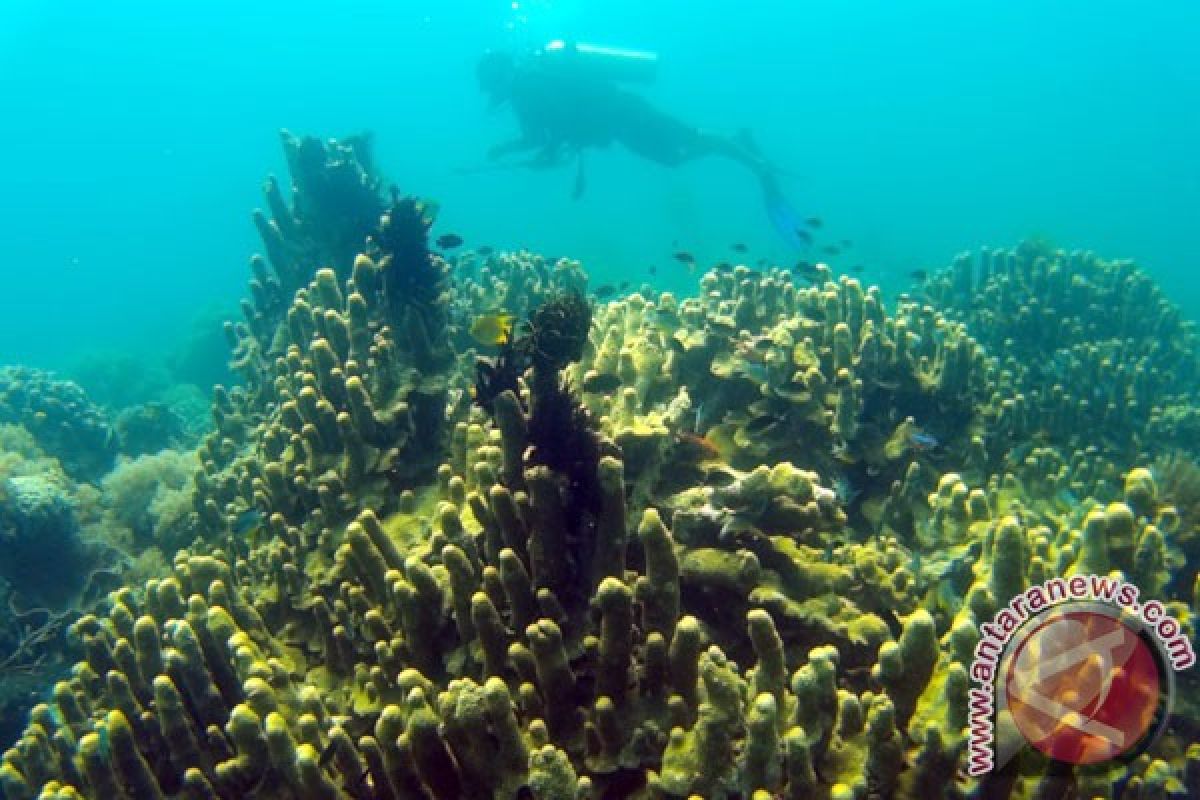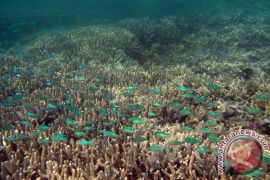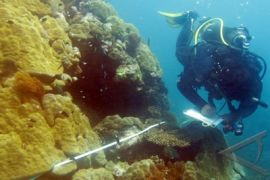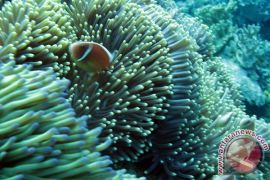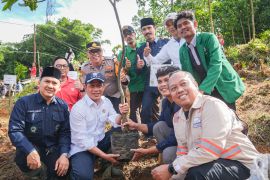The world`s largest archipelagic country with a 260-million population and over 17 islands has 5.8 million square kilometers of marine territory, and some 92 thousand km-long beach and coastal areas, or the world`s second longest coast line after Canada.
Indonesia has various coral reefs, which are spread across an area of 25 thousand square kilometers, or around 10 percent of the world`s coral reefs measuring 284,300 square kilometers.
Besides, Indonesia has the highest number of coral reef species on the planet, notably 569 species from 82 families and 15 tribes, out of the total 845 coral reef species in the world.
Coral reefs are not just beautiful but are also crucial for maintaining the food supply of millions of people living along the coast all over the world.
Coral reef fisheries are a critical source of protein for tens of millions of people, and coral reef tourism provides a significant source of foreign exchange for Indonesia.
Besides, biologically diverse coral reefs are also vital for protecting the shoreline of the country`s low-lying islands.
To help manage its costal region and preserve coral reefs, Indonesia carried out the Coral Reef Management and Rehabilitation Program (COREMAP), which is supported by a multi-donor group.
The Indonesian Institute of Sciences (LIPI), as one of the executive agencies of the COREMP, has claimed that the program has been able to improve the rehabilitation and management of coral reefs in the country.
COREMAP has also helped increase public awareness of the importance of coral reefs, and has encouraged people`s participation in the coral preservation efforts, he claimed.
LIPI`s Oceanography Research Center (P2O) on December 11, 2018, presented a report on two decades of the implementation of COREMAP in Indonesia.
Since 1998, P2O LIPI has been involved in COREMAP national activities, according to Dirhamsyah, the P2O chairman.
"As the center of the world`s coral triangle, Indonesia has the highest diversity of coral species, comprising 569 species from 82 genera and 15 families, or some 70 percent of the world`s coral species. Five of those species are endemic," Dirhamsyah noted.
Under the COREMAP, LIPI has yielded data and scientific information concerning the management and restoration efforts of the coastal ecosystem, including coral reefs, mangroves, and sea grass to support the national policies on coastal area rehabilitation and management, he noted.
The national-level policies are crucial, as several people in Indonesia, which is one of the world`s largest maritime nations, rely on coastal areas as resources and the center of economic growth.
The program has also created an index on the coral and sea grass field ecosystem health, monitoring of the coral and seagrass field ecosystem health, setting up of a database of national coastal ecosystem, training and certificates, demand-based priority research, and implementation of expeditions in outermost islands.
The Nusa Manggala Expedition is currently being organized until December 23, 2018, to identify the potential of coastal natural resources in the outermost isles in Papua, West Papua, and North Maluku.
The expedition covers four themes: ecology, environmental threshold, geomorphology, and socio-economic.
Data, information, and knowledge obtained from the COREMAP research are stored in the Coastal Ecosystem Data Center.
"The data can be easily and quickly accessed through the internet portal application," Dirhamsyah remarked, adding that the data is useful for various purposes related to ecosystem monitoring, education, and further study.
In addition to this, COREMAP has over the past two decades established four Professional Certification Institutions for those tasked with monitoring coral reefs.
"Currently, there are four places for competency tests to certify staff members, namely the Human Resources Competency Development Workshop for Oceanography at the Indonesian Science Institute, Diponegoro University, Raja Ali Haji Maritime University, and Sam Ratulangi University," Dirhamsyah said.
The certification institutions certify the competence of human resources in charge of monitoring coral reefs and ecosystems under the COREMAP programs and the COREMAP-Coral Triangle Initiative (COREMAP CTI).
Meanwhile, to develop regional cooperation networks, the Regional Training and Research Center for Marine Biodiversity and Ecosystem Health (RTRC MARBEST) has been established.
Meanwhile, pollution and environmental damage have posed a threat to oceans and coastal regions having rich biological diversity, unique ecosystems, and genetic resources.
Some 80 percent of marine pollution arose from land activities producing nutrient loadings, wastewater discharge, marine litter, micro-plastics, and other emerging issues, Environmental Affairs and Forestry Minister Siti Nurbaya noted.
Land-based activities have produced waste that harms the marine environment and degrades the quality and function of the marine ecosystem, the minister stated recently.
Indonesia has set a target of reducing plastic waste up to 70 percent by 2015.
By involving various stakeholders, the government has drafted a national action plan to organize various public awareness campaigns to reduce plastic use.
With its mega marine biodiversity as a comparative advantage, Indonesia realizes the responsibility to safeguard the sustainable development of its marine resources. Moreover, President Joko Widodo has said that the ocean is the future of Indonesia, which is located between the Pacific Ocean and the Indian Ocean.
Editing by Andi Abdussalam
Reporter: Fardah Assegaf
Editor: Yosep Hariyadi
Copyright © ANTARA 2018
